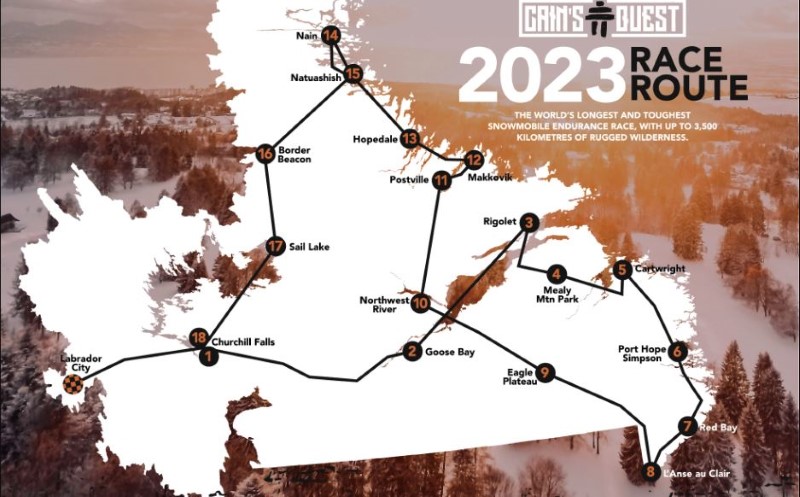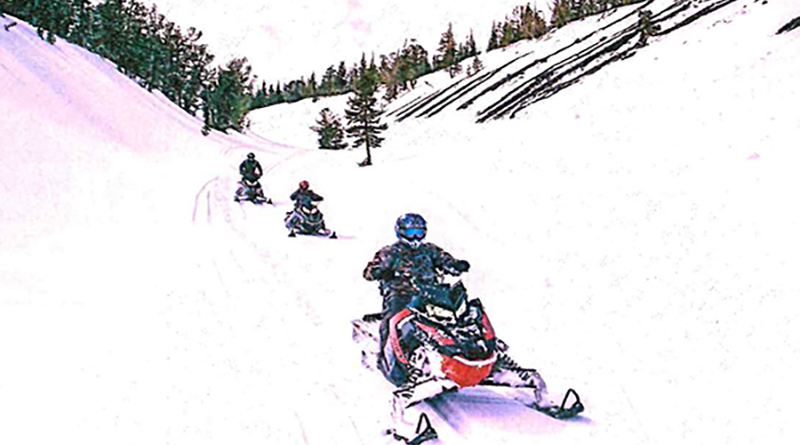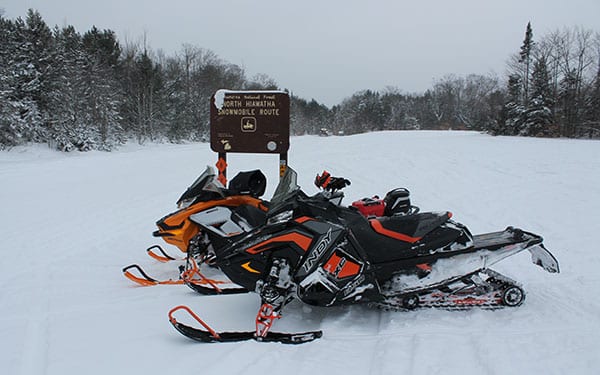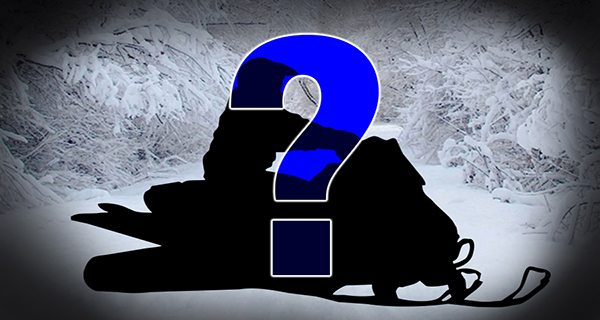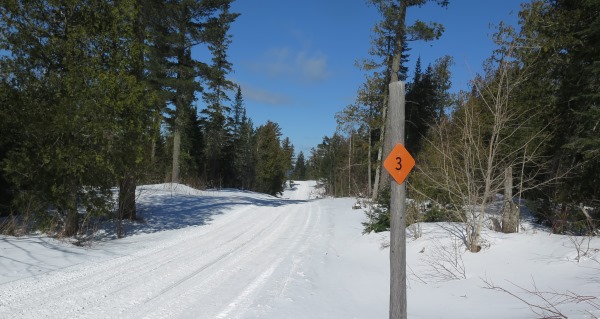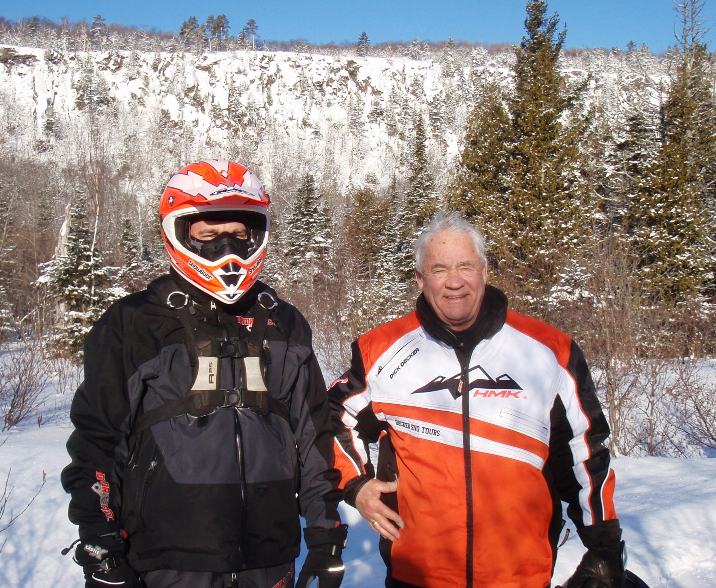 Toured to an enchanting mountain village where skiers swish along the snow-covered main street? Hauled a dead sled out of a picturesque bowl by brute force? Or gone deep-powder riding in the morning, then to play golf that afternoon? These are just some of the fun and games I experienced last winter in Kelowna, British Columbia, which is located in one of the most scenic settings in Western Canada.
Toured to an enchanting mountain village where skiers swish along the snow-covered main street? Hauled a dead sled out of a picturesque bowl by brute force? Or gone deep-powder riding in the morning, then to play golf that afternoon? These are just some of the fun and games I experienced last winter in Kelowna, British Columbia, which is located in one of the most scenic settings in Western Canada.
Kelowna isn’t the first name that springs to mind when talking about some of the top mountain-riding areas. In fact, some would write it off as a contender just because it’s located in the famous Okanagan Valley, a place not renown for serious winters. But they’d be wrong, as Dennis Burns and I discovered last March.
The awarding of the 2010 Winter Olympics notwithstanding, 2003 was a tough year for British Columbia. Throughout the summer, national headlines tracked countless forest fires, some of which drove people from their homes in several parts of the interior, including 30,000 in Kelowna. And last winter, despite snowfall that was lacking and unpredictable, there were numerous deadly avalanches.So British Columbia slopes that may have been benign in previous winters or under other circumstances became hair-trigger traps in 2003, waiting for the slightest quiver to snap on the unwary or unlucky. Avalanches can be set off by temperature extremes, strong winds, spring thaw and increased snow load — and by disturbing movements or sounds, such as those made by people having fun. People just like myself and Burns.
That’s why we intended to be very careful. But we also wanted to ride whenever possible, so staging out of Kelowna for our own personal winter games was a good choice, as was our guide. Pat Whiteway, executive director of the British Columbia Snowmobile Federation, is an experienced, cautious and knowledgeable mountain rider.
At our first meeting, Whiteway said there were places — such as the steeper ascents at Hunter’s Range — that he would not take us to due to the avalanche threat. We would also be extra careful in the places we did go. We didn’t need to be convinced: Two more snowmobilers died in a nearby avalanche soon after our arrival. Golf began to look very inviting!
In many other British Columbia locales, such a riding restriction could have severely limited our choices and enjoyment, but not around Kelowna. Within an hour’s drive on good, bare roads, we were able to visit Greystokes, Big White, Park Mountain, Little White and Silver Star, to name a few of the safe options still available. Each offered a slightly different mix of trail riding, powder playing and hill climbing, with ample snow, good staging areas, and trails and warm-up shelters maintained by very active local snowmobile clubs. Ideal for families and beginners because of the many easy places to ride, these play areas also provided sufficient challenges for all but the most adventurous snowmobilers.
We rode in the Kelowna area for five days, each one blessed with good weather. We had our share of unexpected challenges, too.
One consequence of less-than-usual snow are more exposed rocks than normal. As Burns discovered, it was impossible to predict where the snow was deep enough to fully cushion a sled, or where an errant boulder was too close to the surface. On our second day, we headed out on a 100-mile tour to Big White.
We stopped to play in a meadow bounded by a low, shallow slope sporting several previous tracks. Burns made a casual loop across its face, and on the downward swing he came to an abrupt halt. We thought he’d just bogged down, but when he rejoined us, his right ski tip was pointing rearward — not a good sign. He clipped a small rock, which snapped a metal connector to the ski shaft like a match stick. We were at least 45 minutes from the staging area with a sled that could not be towed easily. After removing the broken ski entirely, Burns said he’d ride it out on the good one. That feat of balance would be a little easier because the main trail was nearby. Still, the prospect of having to stand on the left running board all the way back wasn’t my idea of how our game should be played.
While Burns started back, Whiteway headed to high ground to try to make cell phone contact to arrange a replacement sled. Then, he and I followed that one lone ski track down the mountain. It was an obvious trail until we reached the Kelowna Snowmobile Club’s warm-up shelter and groomer shed. Then, that lone ski track disappeared. Unable to spot it and growing concerned, Whiteway and I headed down to the staging area quickly.
Thankfully, Burns had arrived in medal time riding on one ski and his new riding invention — a shovel. He’d commandeered a sturdy metal one from the groomer, and jammed the handle through the suspension with the shovel face to the rear and the weight of the sled rested on its curved blade. Talk about flotation. Steering wasn’t exactly precise, but he scooted along, and none the worse for wear. Ingenuity deserves reward, so the pickup truck Whiteway had arranged soon arrived. Burns met us later that day at the Big White Ski Resort with a replacement sled for the return ride. I wish that had been the end of our sled misfortunes.
The next day, we undertook our most ambitious outing: To Park Mountain near Lumby. This is one of those incredible British Columbia locales where you can seemingly ride forever over sweeping hills and through magnificent bowls and scenic valleys. We made it to the end of the groomed trail at a Lumby Snowmobile Club warm-up shelter, planning to ride out from there as far as time and fuel would allow.
Beside the hut was a small bowl — hardly more than a slight depression. However, it was a warm day and the snow was deep, so when one of our companions drove a short track sled in, he had difficulty getting out. I figured to have no problem with my 151-inch long paddle track, and was doing fine until, having climbed about halfway out, the sled stopped with a loud clunk. Stump or rock, I thought, dreading a repeat of the previous day’s ordeal. Worse, a quick visual inspection under the hood revealed a shattered chaincase. The chain had snapped and punched clean through the metal. Even I, Mr. Preparedness himself, don’t carry those spare parts. My sled was going nowhere. How I longed for that shovel to give it a decent burial.
Try as we might, we couldn’t tow, push, pull or otherwise man-handle that dead soldier to the top. At least not before all of us had abandoned our outerwear and helmets, and were dripping sweat, while filling the air with steamy exhalations and even steamier curses.
Finally, after packing down an alternate route with countless pass-overs from our other sleds, we seven weary Olympians were able to haul that beast to the rim. There, when the time came, it would all be downhill for the race back to the trucks. For now, though, we returned to our hard-earned games — after all, we’d come to play, not work!
And the Kelowna region is a great place for playing. Situated about equidistant between Vancouver and Calgary, the city is also midway on the shores of the magnificent Okanagan Lake. Kelowna is surrounded by mountains, including the Monashees to the east, which offer ample snowmobiling opportunities. With a population of 100,000, Kelowna has all the choices, services, amenities and night life of a major urban center, while retaining the benefit of close proximity to backcountry adventure. It’s easily accessible by highway, and boasts the southern interior’s only international airport.
Dry air and bright skies characterize Kelowna winters, which are much milder than areas to the north and east. But as we quickly discovered, just because the golf courses are open and the flowers are budding, doesn’t mean there isn’t great snowmobiling up the next hill. In fact, Big White Ski Resort, located only 45 minutes from Kelowna, boasts an annual average snowfall of 24.5 feet of powder each winter. More great riding and snow can also be found within two hours at places such as Kamloops, Enderby, Sicamous and Merritt. Even Revelstoke is close enough for a side trip while visiting Kelowna.
Despite the setbacks, our winter games racked up 360 miles in five days. At least that was the linear measure — who knows what the distance tally was for all the hill-climbing, drift-busting, air-catching and powder-cutting we did. And we sure made a few medal-worthy jumps! We explored hidden valleys, stopped for many panoramic views and lunched at various shelters. We did more trail riding than usual because of the prevalent avalanche threat. But that’s the beauty of snowmobiling, Kelowna style — when conditions are right, there are plenty of big slopes to conquer, but there are also many other riding alternatives, any of which beat sitting around in a hotel room waiting for the weather to break so you can see the mountain top.

